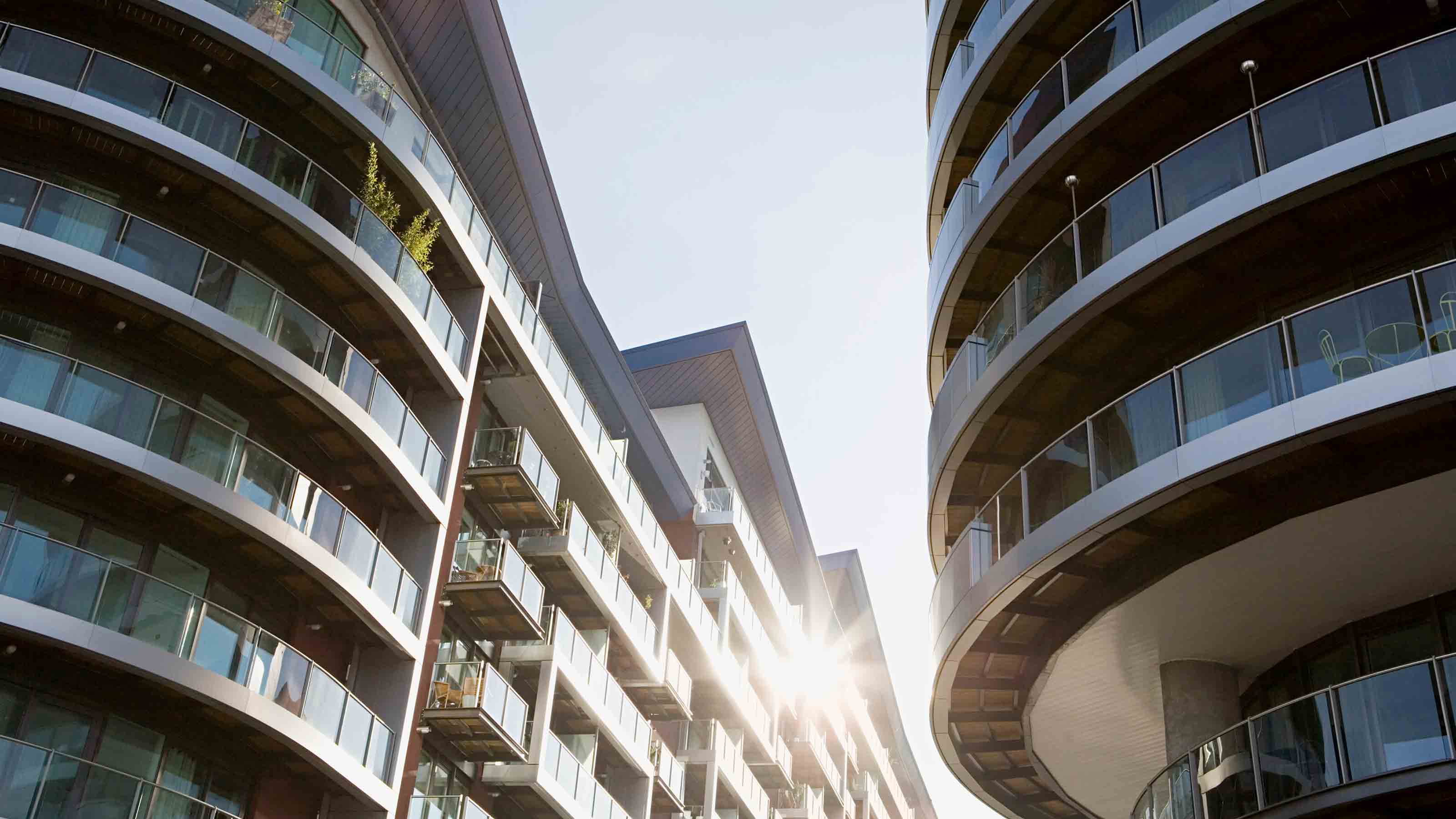Best Cities for Every Age: Families
As part of our annual Best Cities feature, here's a look at the top five metropolitan areas for families.
For growing families in search of a place to call home, finding an area that has a top-notch education system, safe neighborhoods and a low cost of living is a high priority. Jobs that allow parents to comfortably provide for their children are also a must-have.
SEE OUR GUIDE: Best Cities for Every Age
To identify the winners, Kiplinger teamed up with Kevin Stolarick, research director at the Martin Prosperity Institute, a think tank that studies economic prosperity. All of the cities on our list have reasonable living costs, strong employment growth and a population that scores high on measures of education and tech-savviness. For families, we also factored in the student-teacher ratio in the public schools and the crime rate.

Sign up for Kiplinger’s Free E-Newsletters
Profit and prosper with the best of expert advice on investing, taxes, retirement, personal finance and more - straight to your e-mail.
Profit and prosper with the best of expert advice - straight to your e-mail.
The cost-of-living index measures how expensive it is to live in a city; the national average score is 100. That means cities with a score below 100 have a lower-than-average cost of living. Nationwide, the median household income is $43,024 and median income growth from 2006 to 2011 was 11.1%. The national unemployment rate is 8.2%.
YOUR TAKE: Best Cities for All Stages of Life
Check out our picks, and share your thoughts in our reader comment box below:
1. Des Moines
Population (metro area): 569,633
Unemployment rate: 5%
Cost-of-living index: 91.3
Median household income: $57,185
Student-teacher ratio: 14.5
A low unemployment rate, high-paying financial-services jobs and below-average housing costs allow Des Moines residents to enjoy a standard of living that’s the envy of their friends in larger cities. Families can easily find a four-bedroom home with an attached garage in the $200,000 range.
Most families don't need to shell out extra money to pay for private schools. Des Moines' public schools offer small class sizes, and Iowa's test scores are above average. Rush hour is blissfully brief, an attribute highly valued by busy parents.
The city and suburbs are connected by more than 300 miles of bike and walking trails. In the summer, families can take in a minor league baseball game at Principal Park, home to the Triple-A Iowa Cubs. Brenton Skating Plaza, part of the 1.2-mile Principal Riverwalk that is scheduled for completion this year, is a popular wintertime destination.
2. Manchester-Nashua, N.H.
Population (metro area): 400,721
Unemployment rate: 4.8%
Cost-of-living index: 119.9
Median household income: $68,513
Student-teacher ratio: 13.8
Set along the Merrimack River amid a classic New England landscape, these two former mill towns and surrounding communities are both affordable and livable. Although the median home price (about $195,000) exceeds the national median, so does the median income. New Hampshire residents pay high property taxes but no state income tax or sales tax. Families with school-age children tend to gravitate to nearby towns such as Bedford, Amherst and Hollis, where the schools outperform those in Manchester and Nashua.
Local event calendars are chock-full of family-friendly activities, including minor league baseball and hockey, as well as hands-on activities at the SEE Science Center and the Currier Museum of Art. Residents are within an hour's drive of the ocean, White Mountains and lakes region.
Workers enjoy a brief commute, while those who work in Boston pay for their New Hampshire lifestyle in driving time and Massachusetts state income tax. A first-rate regional airport with lots of direct flights to major cities is a boon for parents who travel for business.
3. Trenton-Ewing, N.J.
Population (metro area): 366,513
Unemployment rate: 7.6%
Cost-of-living index: NA
Median household income: $71,767
Student-teacher ratio: 11.5
For parents who work in Philadelphia and New York but don't want to raise their kids there, this is a prime location, located midway between the two. Many suburbanites also commute into Trenton for jobs in state government.
The big draw for families in Mercer County is Princeton (home to Princeton University) and its top-flight public schools. Families who can't afford pricier Princeton look to somewhat more affordable West Windsor or Plainsboro and Cranbury (in Middlesex County). Closer-in suburbs (such as Ewing, Robbinsville and Hamilton) offer attractive and affordable housing, but the trade-off may be paying for private school for the kids.
Many of Mercer County's communities are internationally diverse and progressive. Parents are highly educated and expect the same of their children, resulting in a highly competitive atmosphere. Mercer County also offers abundant, county-run recreation centers and is within easy driving distance of the Jersey Shore and the Pocono Mountains.
4. Dallas-Fort Worth.
Population (metro area): 6,371,773
Unemployment rate: 6.8%
Cost-of-living index: 94.0
Median household income: $55,459
Student-teacher ratio: 14.8
Numerous corporations have located their headquarters in this northern Texas city. Many of their employees settle in the fast-growing northern suburbs of Dallas (such as Richardson, Plano, Allen and Frisco) for the good schools and homes with big yards and swimming pools (where the median home price runs $210,000).
Families make friends through school, church, sports and lots of mothers' support groups. The city's Arts District, the nation's largest, offers multiple venues, such as the Dallas Museum of Art, with activities and camps for kids. The Museum of Nature & Science will expand with a new facility that opens in 2013. Interactive exhibits will emphasize science, math, technology and natural history.
The car rules here, despite the Dallas Area Rapid Transit system. Commuters endure the fifth worst traffic congestion in the U.S. (in terms of wasted fuel and lost time, according to the Texas Transportation Institute).
5. Rochester
Population (metro area): 1,054,323
Unemployment rate: 8.0%
Cost-of-living index: 98.6
Median household income: $51,434
Student-teacher ratio: 11.5
Rochester's iconic company, Eastman Kodak, may be in bankruptcy, but this area has family-friendly assets -- including top-ranked public and private schools, a good economy (Kodak aside) that enjoys a low jobless rate, a park system designed by Frederick Law Olmsted, and a hiking and bike trail along the Genesee River. Living costs are below the national average, aided by affordable homes (median price: $87,899).
The presence of the University of Rochester (with its Eastman School of Music) and Rochester Institute of Technology add a youthful cultural vibe. Kid-friendly activities include visits to the National Museum of Play at the Strong and Rochester Museum and Science Center (which includes a planetarium), as well as the Seneca Park Zoo. Rather see sports? You can choose among hockey (Rochester Amerks), Triple-A baseball (Red Wings) or soccer (Rhinos).
Get Kiplinger Today newsletter — free
Profit and prosper with the best of Kiplinger's advice on investing, taxes, retirement, personal finance and much more. Delivered daily. Enter your email in the box and click Sign Me Up.
-
 This One Area of Americans' Retirement Readiness Gets a Bad Grade
This One Area of Americans' Retirement Readiness Gets a Bad GradeMillions of Americans score poorly on retirement readiness due to this Achilles' heel. Are you prepared?
By Christy Bieber Published
-
 REAL ID Deadline: What You Need by May 7, 2025
REAL ID Deadline: What You Need by May 7, 2025Worried about needing a REAL ID soon? Learn more about the requirement, how to get your ID and valid REAL ID alternatives.
By Laura Gariepy Published
-
 How to Find Foreclosed Homes: Best Foreclosure Listings Sites
How to Find Foreclosed Homes: Best Foreclosure Listings SitesMaking Your Money Last Find foreclosed homes for sale on these foreclosure listing websites. Search for properties on these free, paid or government sites.
By Bob Niedt Last updated
-
 Luxury Home Prices Rise as the Rich Dodge High Mortgage Rates
Luxury Home Prices Rise as the Rich Dodge High Mortgage RatesLuxury home prices rose 9% to the highest third-quarter level on record, Redfin reports, growing nearly three times faster than non-luxury prices.
By Kathryn Pomroy Published
-
 Four Tips for Renting Out Your Home on Airbnb
Four Tips for Renting Out Your Home on Airbnbreal estate Here's what you should know before listing your home on Airbnb.
By Miriam Cross Published
-
 Five Ways to Shop for a Low Mortgage Rate
Five Ways to Shop for a Low Mortgage RateBecoming a Homeowner Mortgage rates are high this year, but you can still find an affordable loan with these tips.
By Daniel Bortz Last updated
-
 Looking to Relocate? Plan for Climate Change
Looking to Relocate? Plan for Climate Changebuying a home Extreme weather events are on the rise. If you’re moving, make sure your new home is protected from climate change disasters.
By Rivan V. Stinson Last updated
-
 Retirees, A Healthy Condo Has a Flush Reserve Fund
Retirees, A Healthy Condo Has a Flush Reserve FundSmart Buying Reserve funds for a third of homeowner and condo associations have insufficient cash, experts say. Here are some cautionary steps you should take.
By Patricia Mertz Esswein Published
-
 Cash Home Buyers: New Services Offer Help Making All-Cash Offers
Cash Home Buyers: New Services Offer Help Making All-Cash OffersBecoming a Homeowner Some firms help home buyers make all-cash offers on homes. Weigh the fees before you sign on.
By Emma Patch Published
-
 Home Sale Prices in the 50 Largest Metro Areas
Home Sale Prices in the 50 Largest Metro AreasBecoming a Homeowner What’s happening in the market where you live?
By the editors of Kiplinger's Personal Finance Published